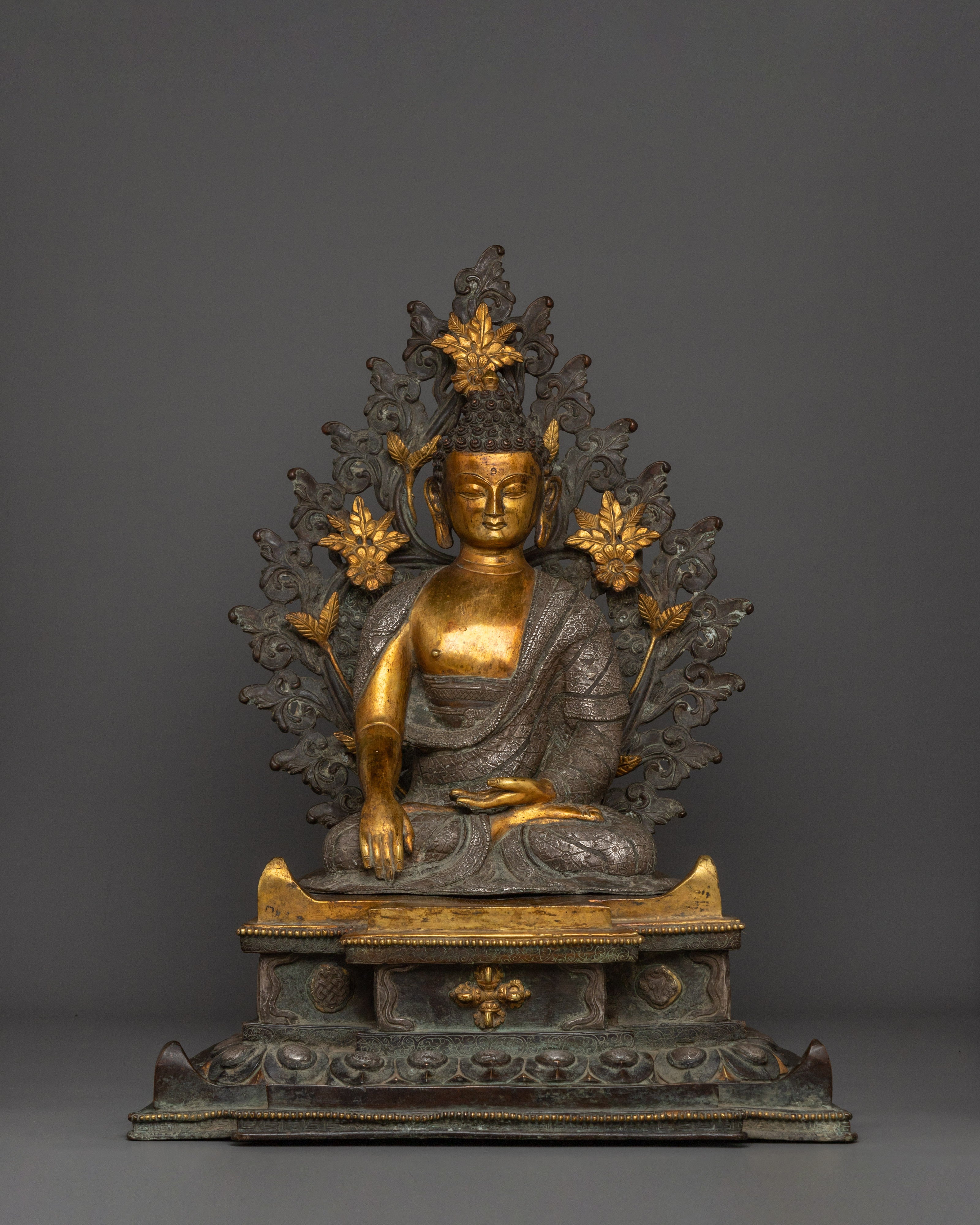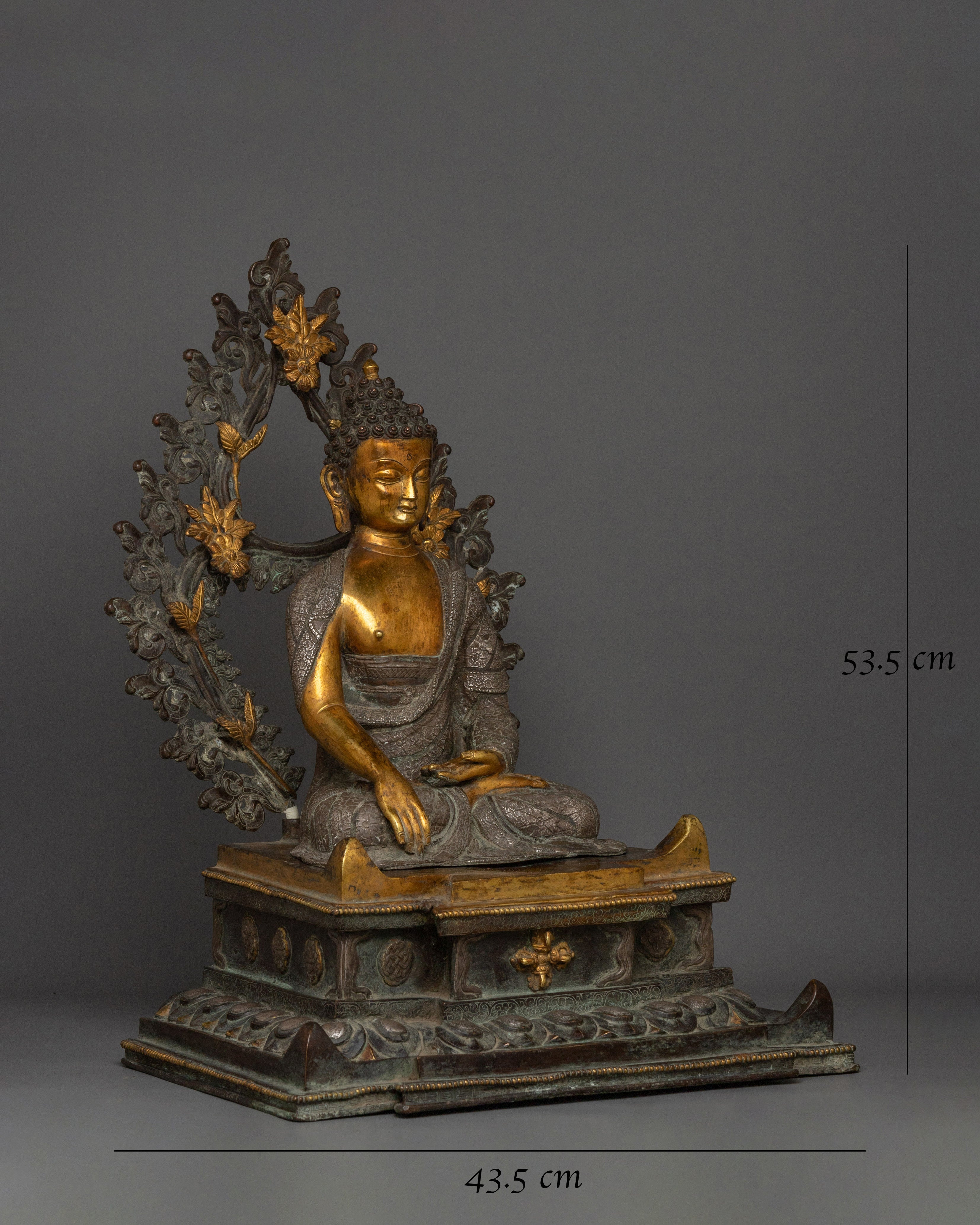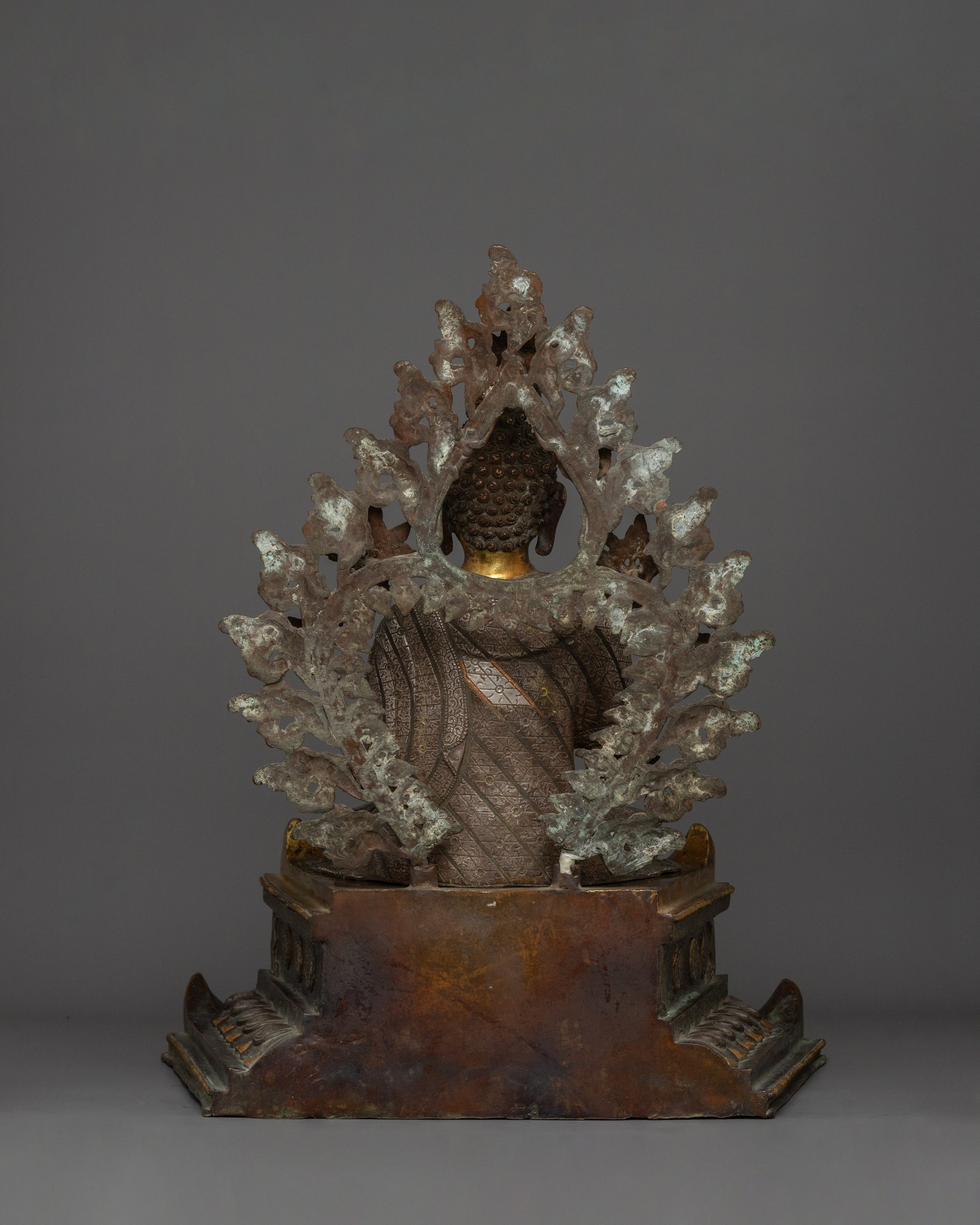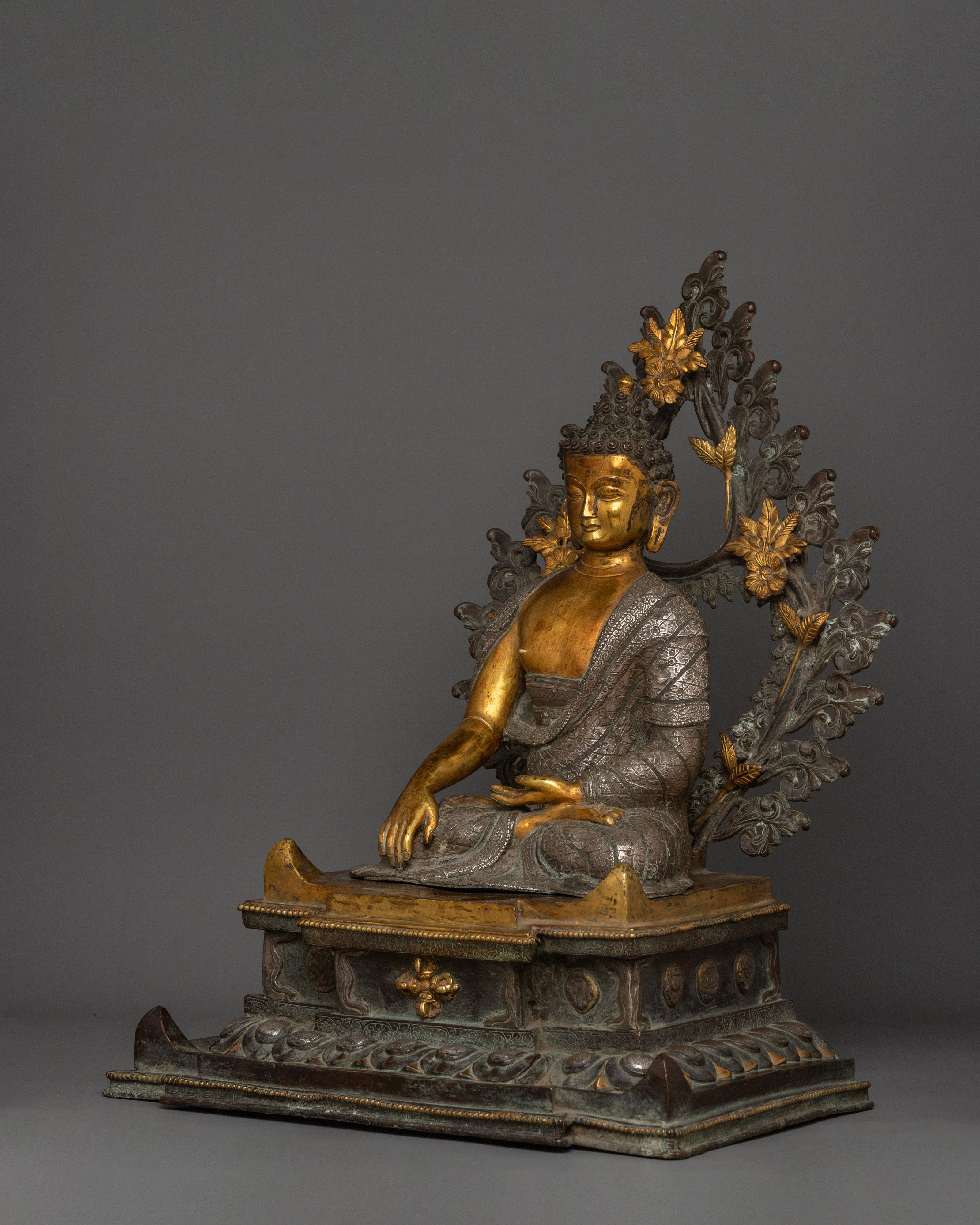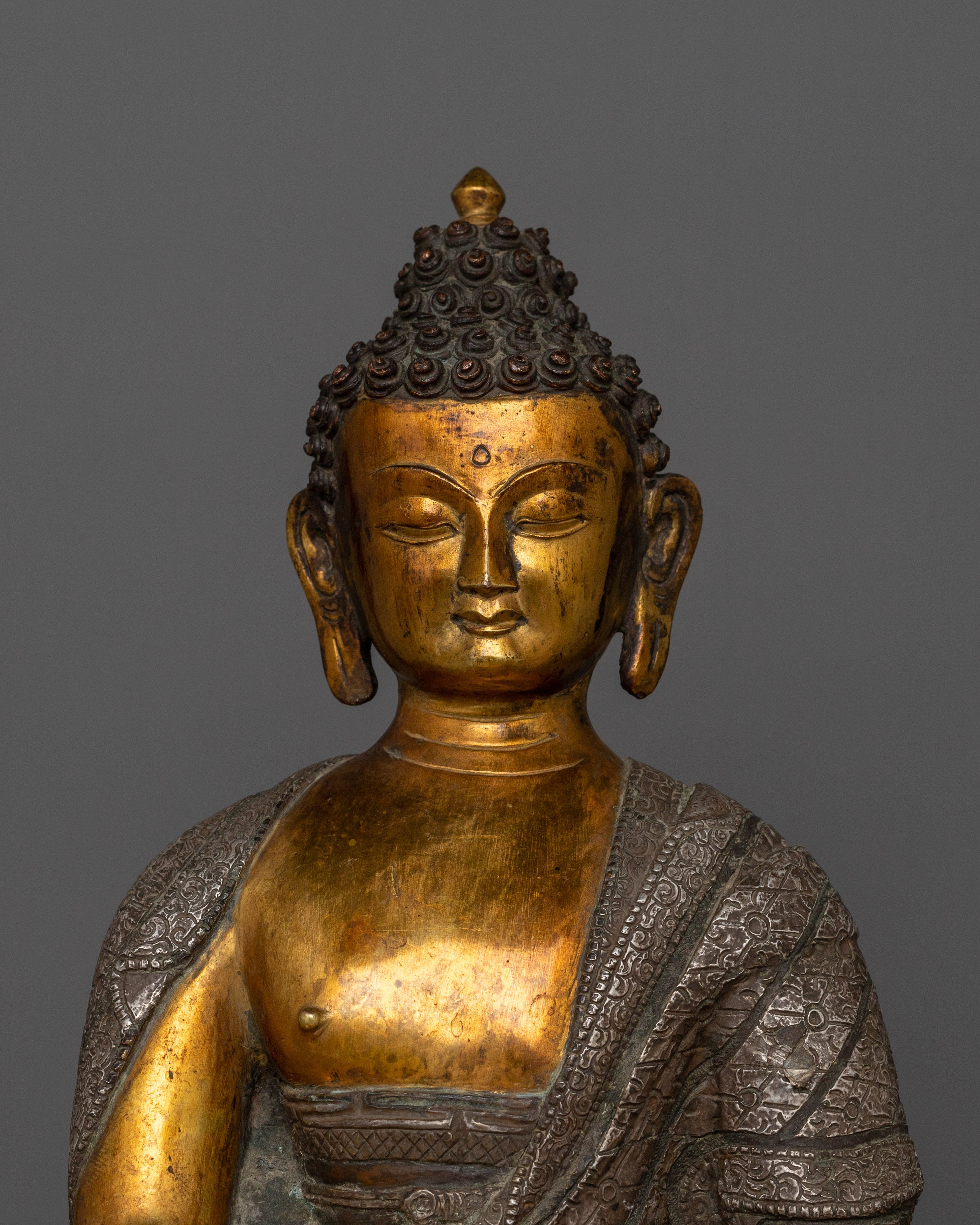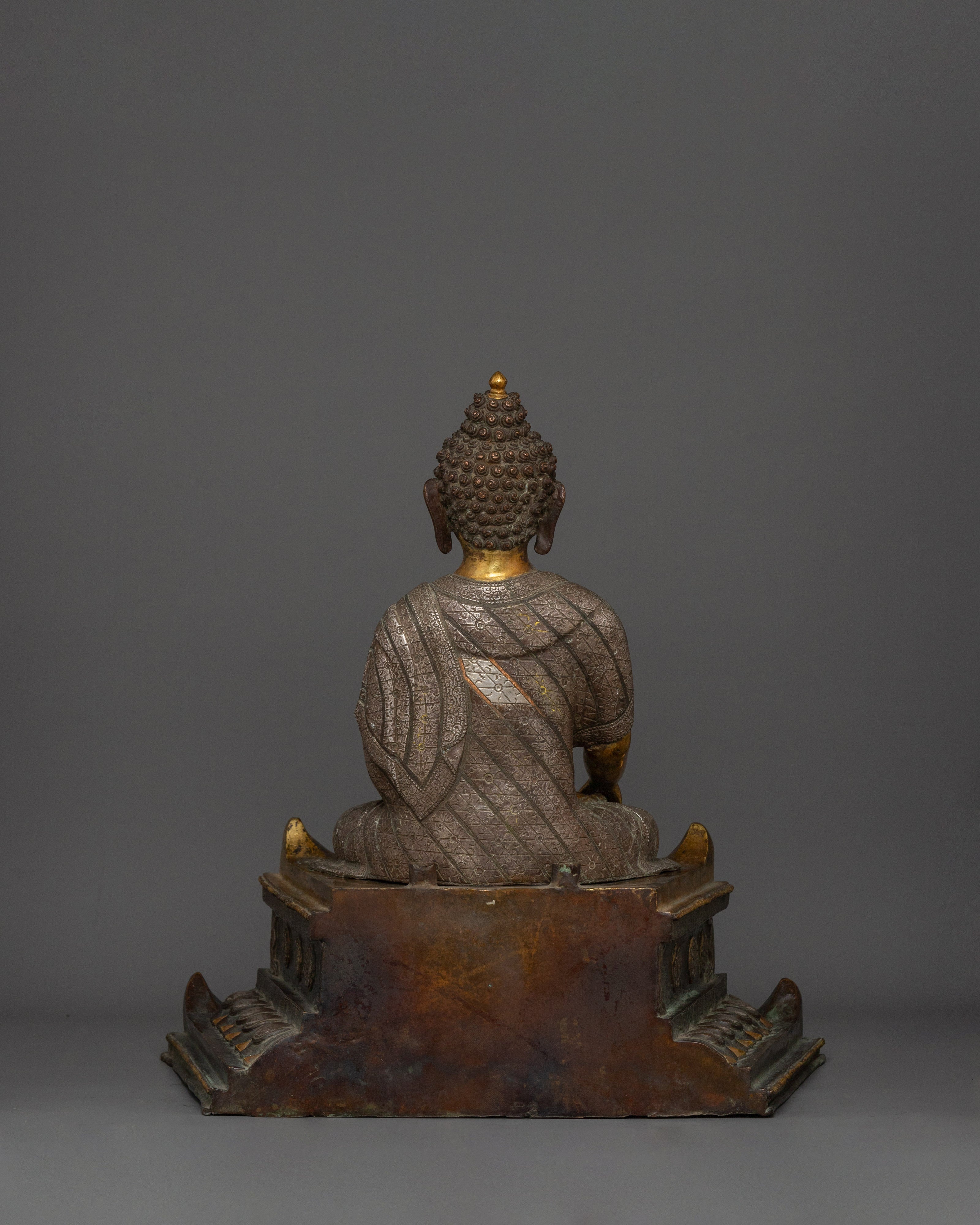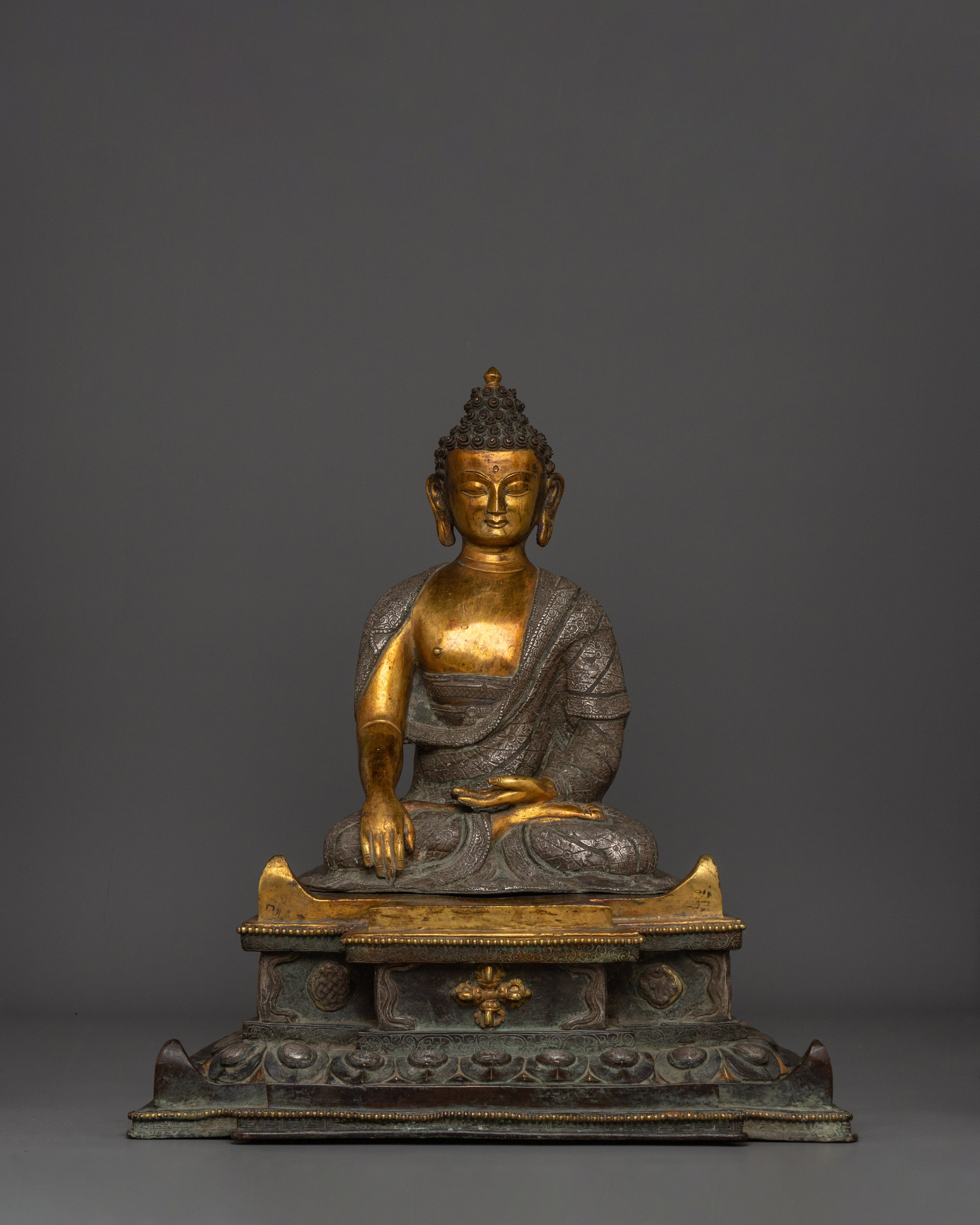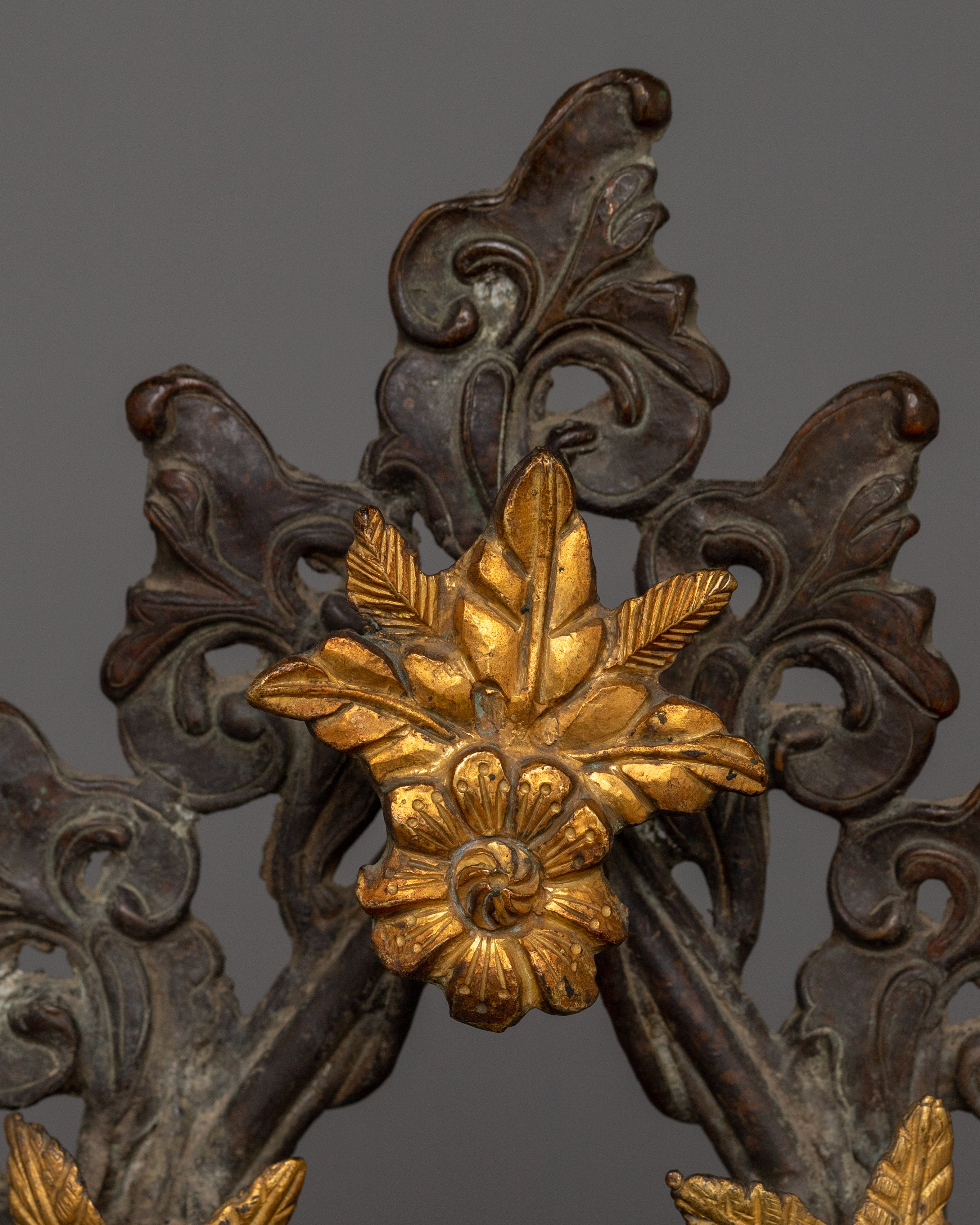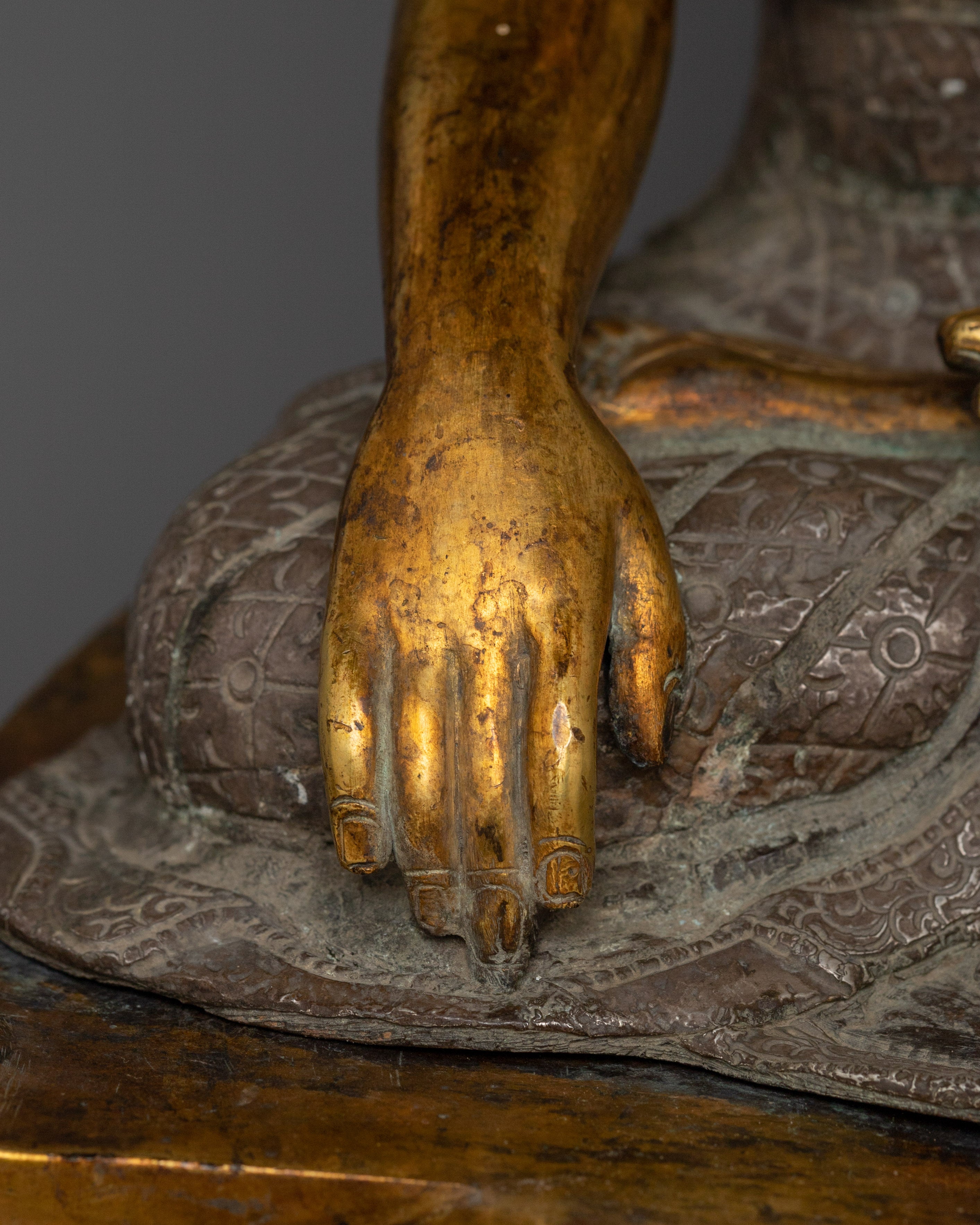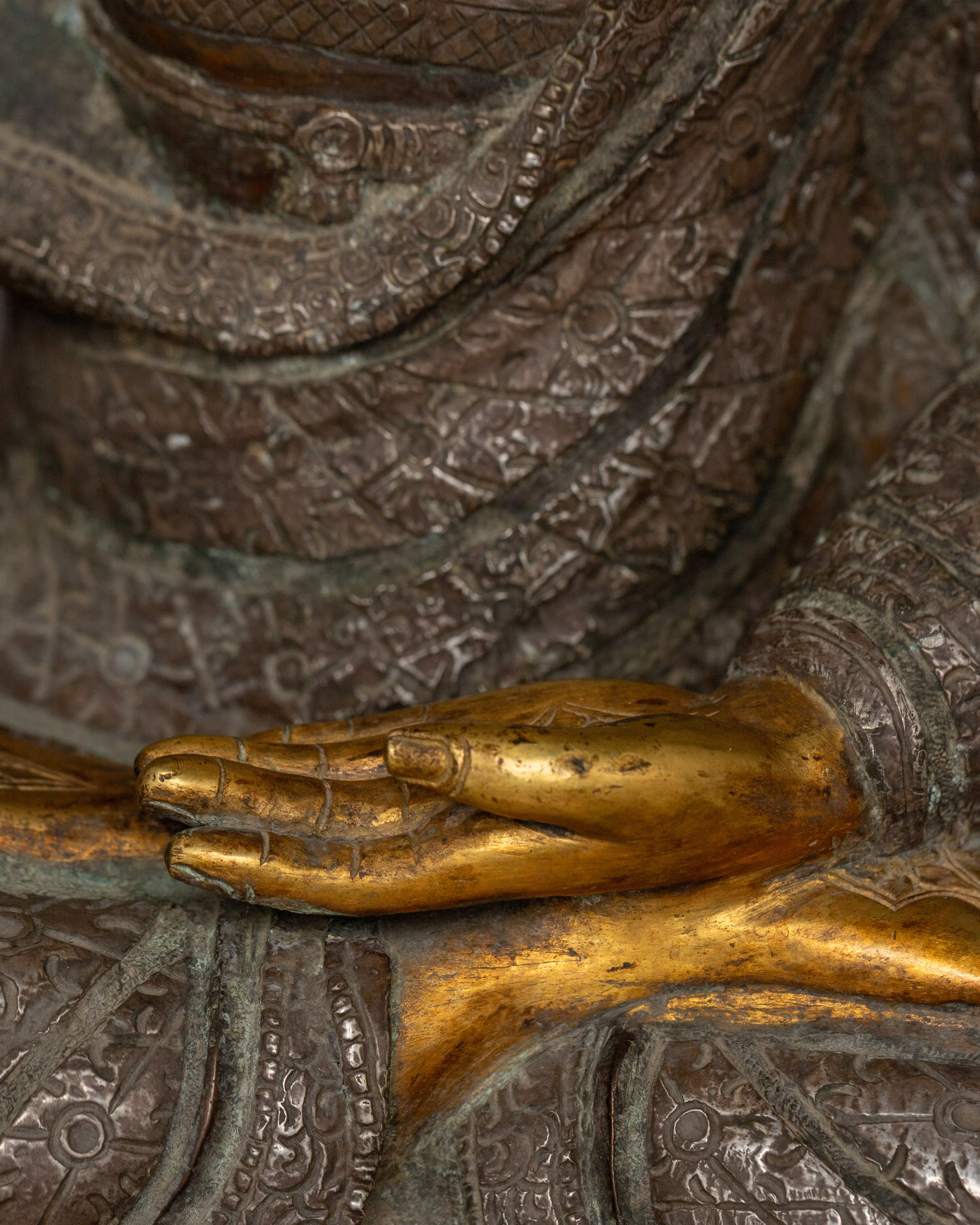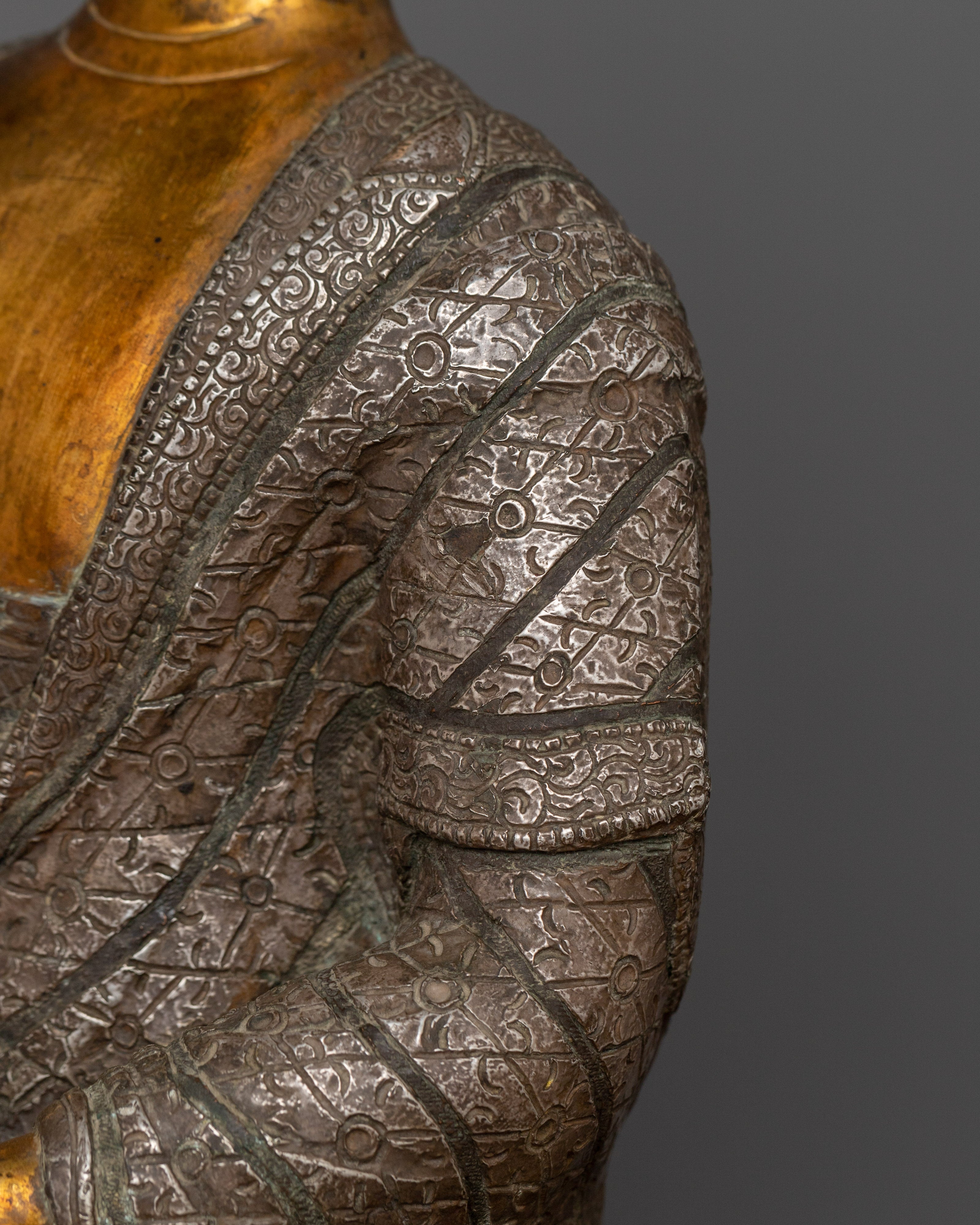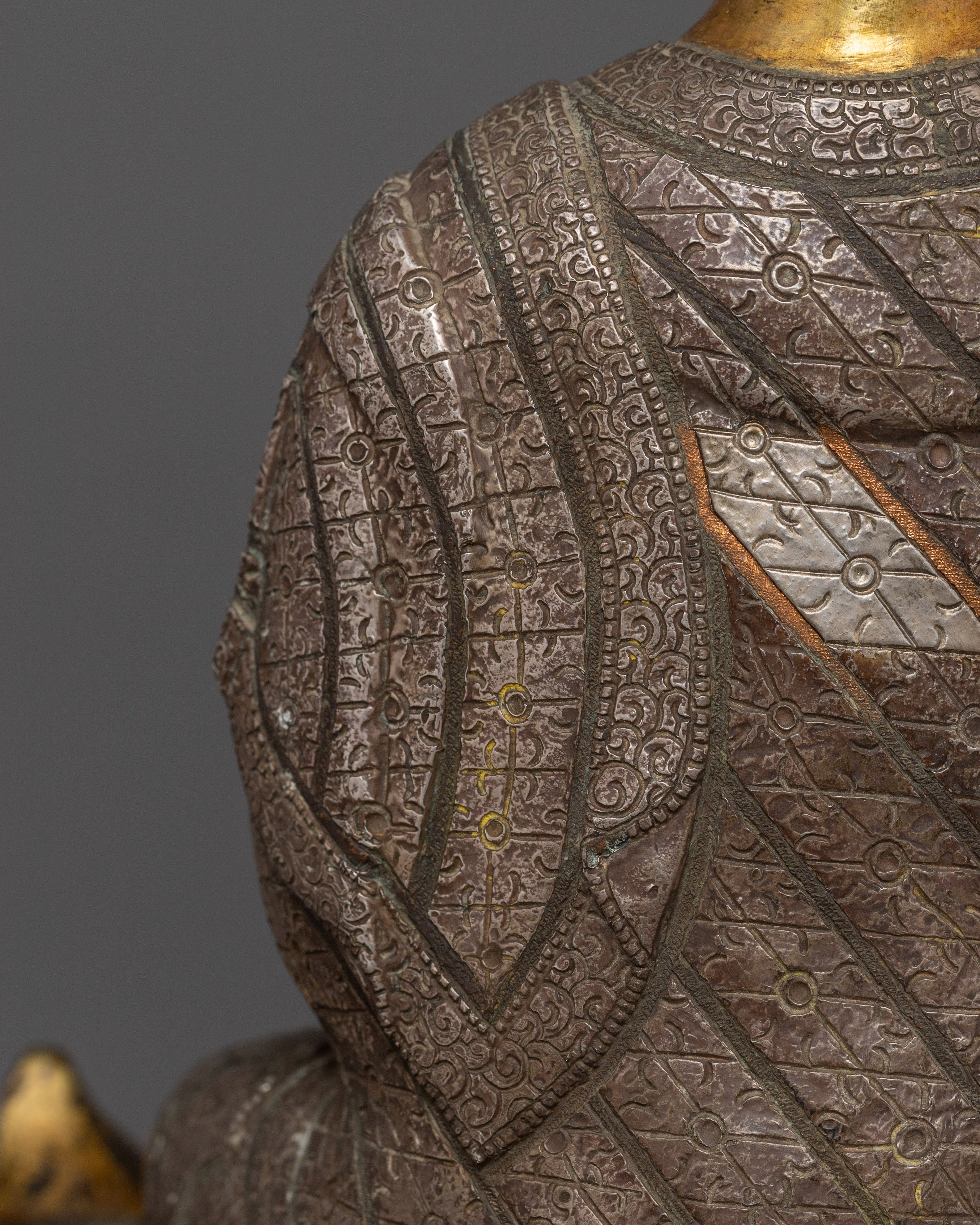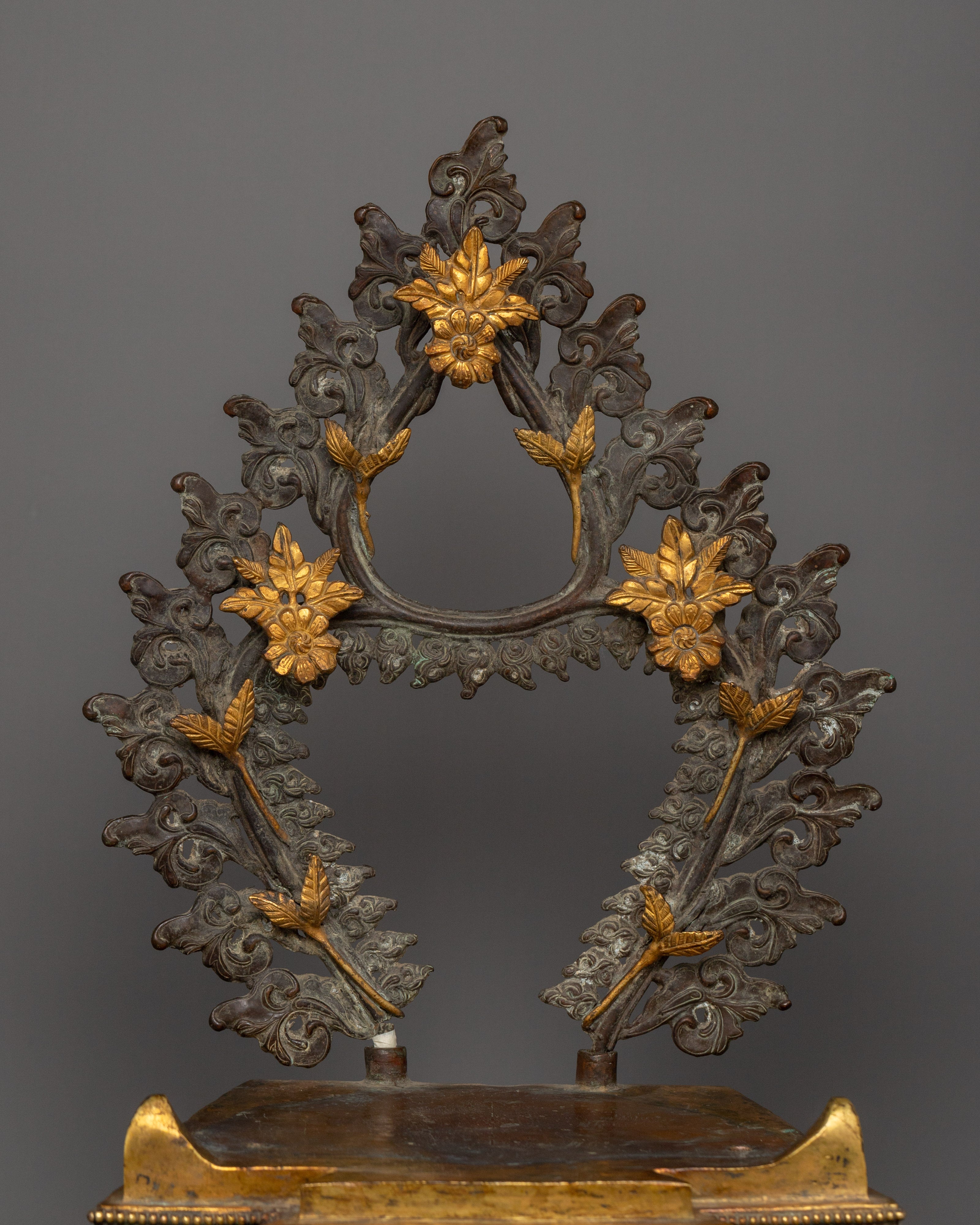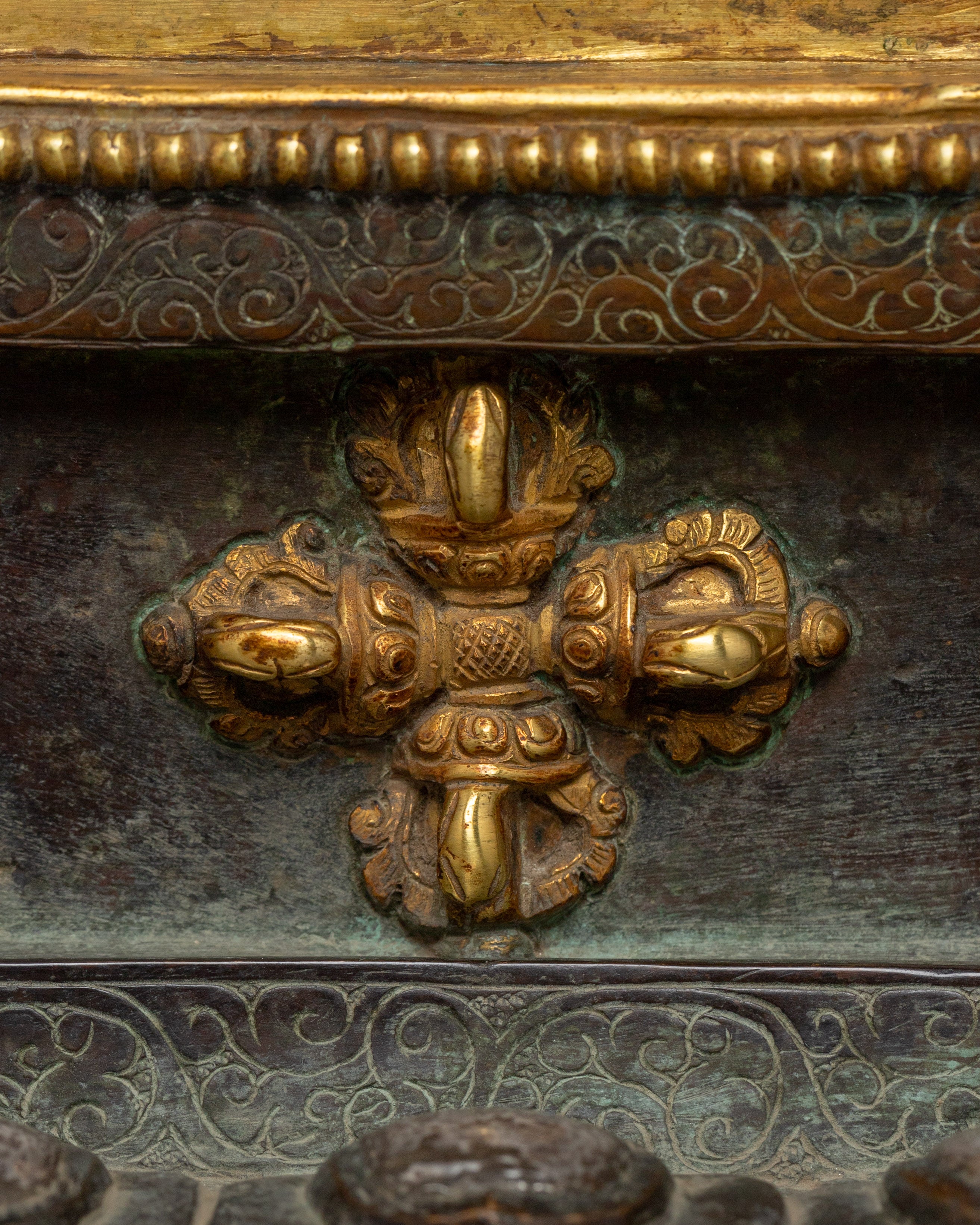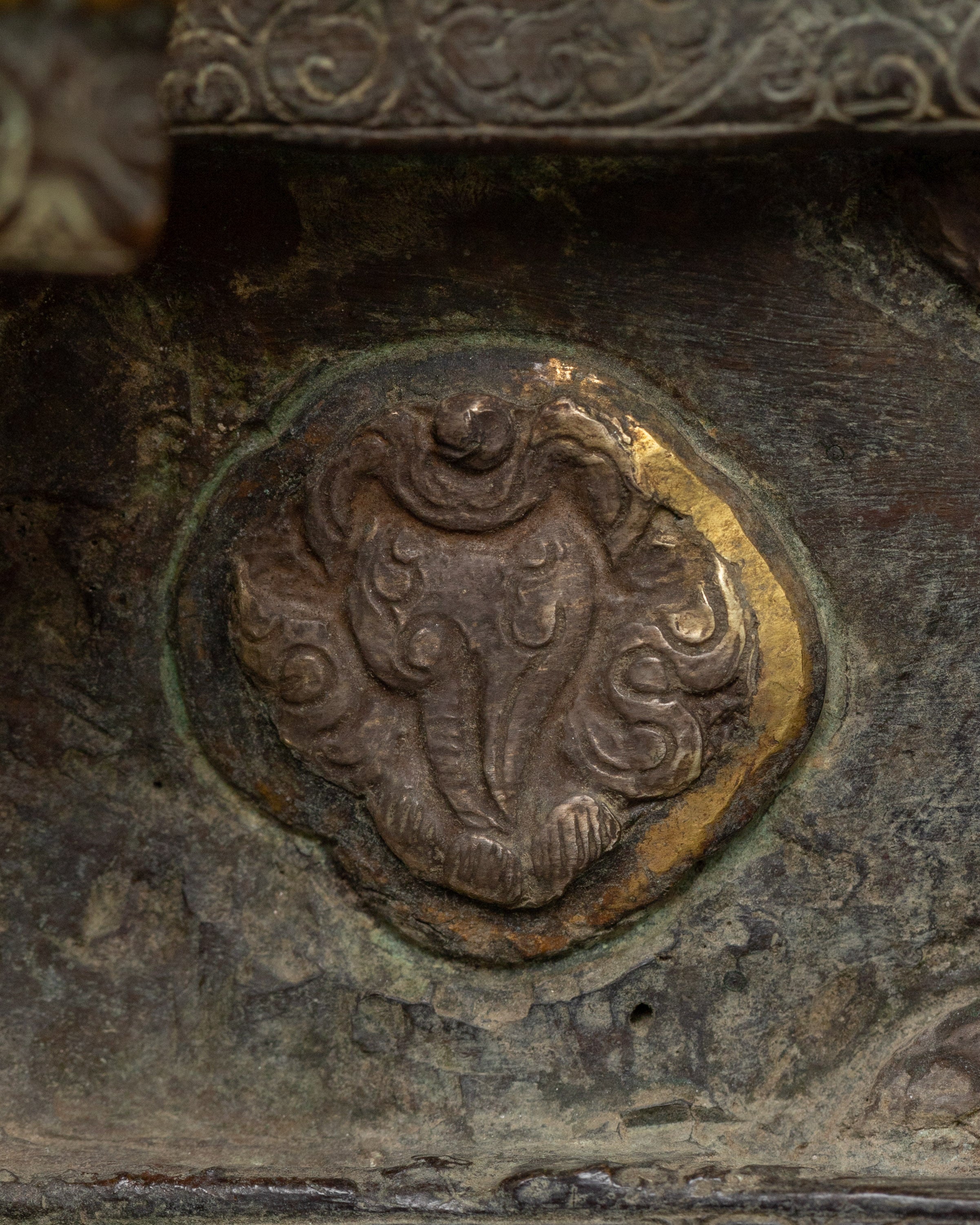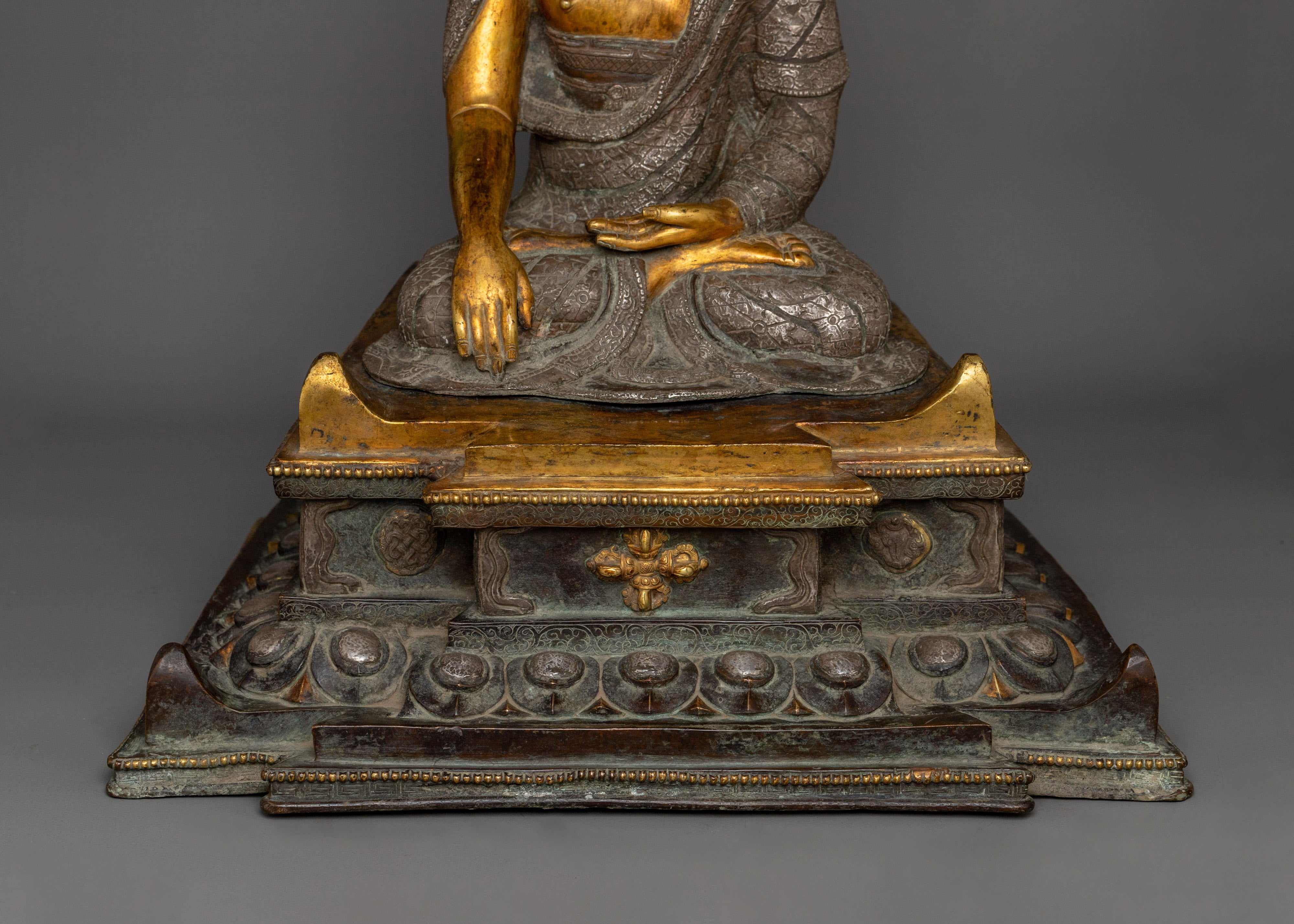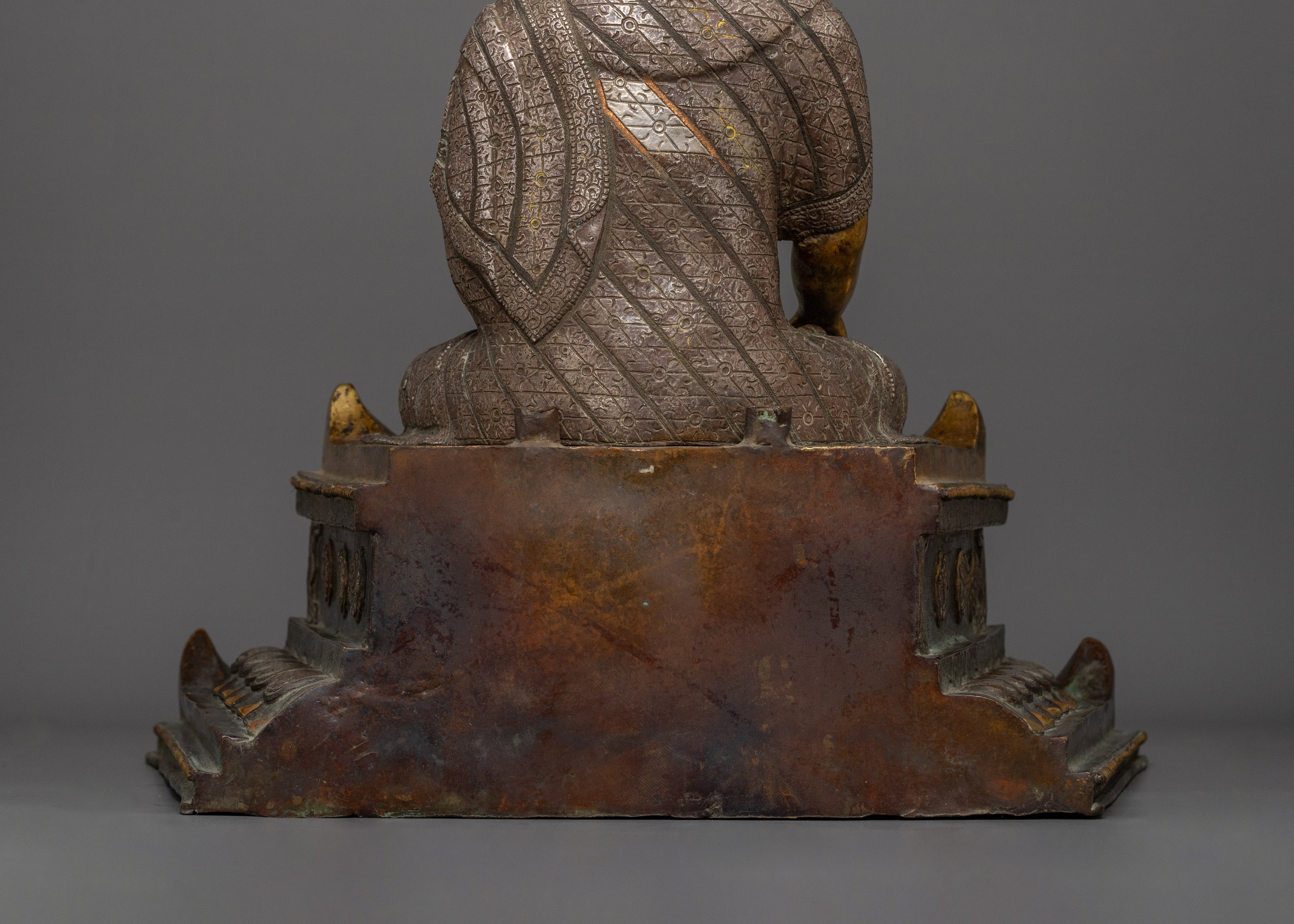Description
Statue of Shakyamuni Buddha Embodiment of Wisdom | Sage of the Shakyas
This statue of Shakyamuni Buddha, also known as Gautama Buddha, measures 21.1”/53.5cm in height and 17.1”/43.5cm at the base, with a weight of 13.98 kg. Crafted from a copper body, it features a 30–40-year-old antique finish and is elegantly adorned with 24K gold gilding. The statue embodies a timeless, classy aesthetic—perfect for both sacred spaces and sophisticated interior decor. Meticulously handcrafted by skilled Nepalese artisans, this exquisite piece is ideal for altars, meditation spaces, or as a meaningful decorative addition for those seeking mindfulness and spiritual inspiration.
Shakyamuni Buddha, also known as the Sage of the Shakya Clan, was born as Siddhartha Gautama into the Shakya clan in present-day Nepal. Renouncing his royal life after encountering the suffering of old age, sickness, and death, he sought enlightenment and attained Buddhahood under the Bodhi tree. The title Shakyamuni combines his clan’s name with Muni, meaning "sage." In iconography, Shakyamuni Buddha is seated on a lotus throne adorned with floral motifs, symbolizing purity and spiritual awakening. His right hand forms the Bhumisparsha Mudra —the earth-touching gesture—signifying his enlightenment and triumph over Mara. His left hand holds an alms bowl, representing both his life as a humble monk and his detachment from material needs. He is positioned in the vajra(full-lotus) posture, denoting stability and deep meditative concentration. His serene expression reflects profound wisdom, inner peace, and boundless compassion. Through these symbolic elements, Shakyamuni Buddha conveys the path to enlightenment and serves as a compassionate guide for all beings.
Size: 21.1”/53.5cm (Height) x 17.1”/43.5cm (Base)
Weight: 13.98 kg
Material: 30-40 Yrs old Antique Finish, Copper Body, 24K Gold Gilded
Siddhartha Gautama, also known as Shakyamuni Buddha, rediscovered the Middle Way and is regarded as the enlightened one who established Buddhism. His teachings on the Four Noble Truths and the Eightfold Path have helped numerous people comprehend the nature of suffering, its causes, and the way to liberation. Shakyamuni's life exemplifies the possibility for all beings to reach enlightenment via practice and moral behavior, from his renunciation to his enlightenment and teaching career.

